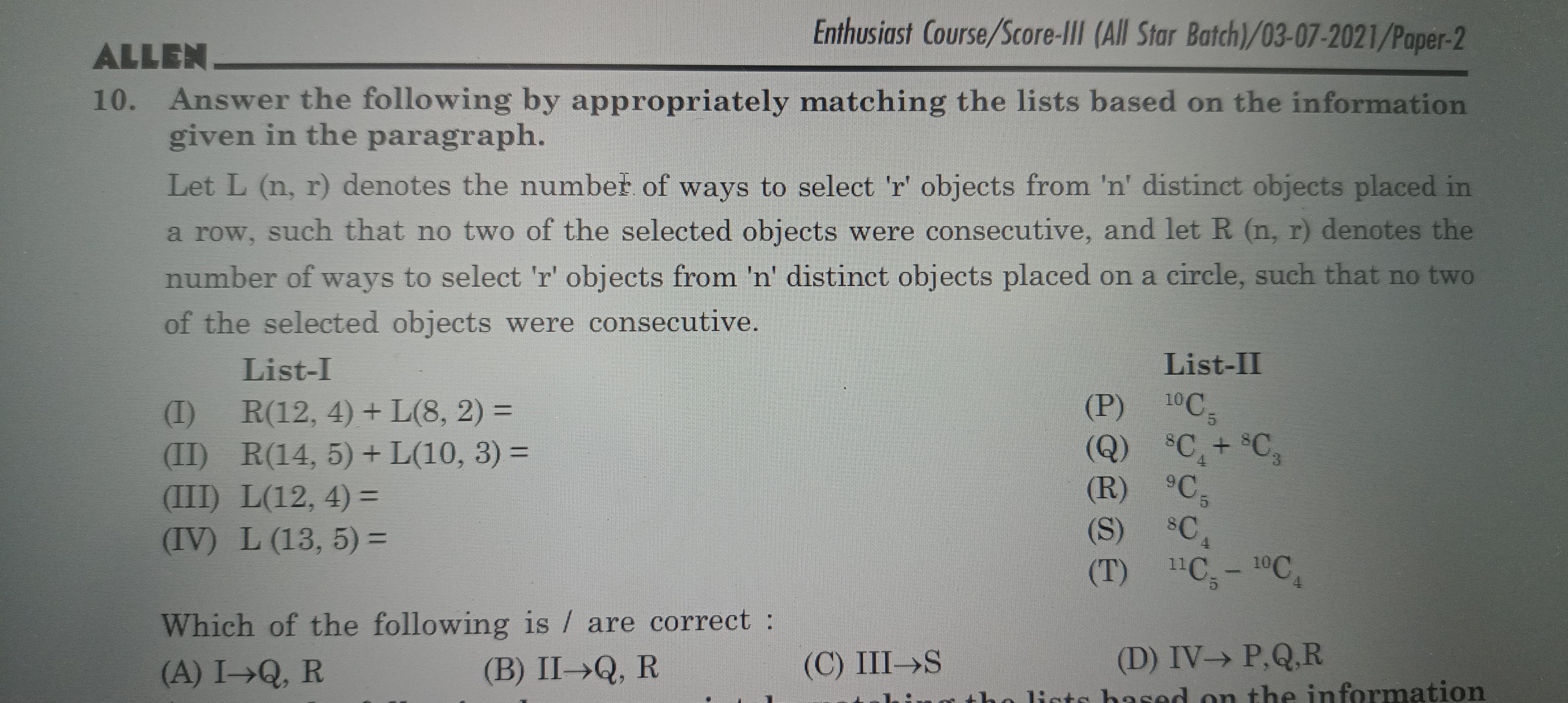Question
Question: Answer the following by appropriately matching the lists based on the information given in the parag...
Answer the following by appropriately matching the lists based on the information given in the paragraph.
Let L (n, r) denotes the number of ways to select 'r' objects from 'n' distinct objects placed in a row, such that no two of the selected objects were consecutive, and let R (n, r) denotes the number of ways to select 'r' objects from 'n' distinct objects placed on a circle, such that no two of the selected objects were consecutive.
List-I (I) R(12, 4) + L(8, 2) = (II) R(14, 5) + L(10, 3) = (III) L(12, 4) = (IV) L (13, 5) =
List-II (P) 10C5 (Q) 8C4+8C3 (R) 9C5 (S) 8C4 (T) 11C5−10C4
Which of the following is / are correct :

I→Q, R
II→Q, R
III→S
IV→ P,Q,R
Option (A) is correct:
- (I) → Q, R.
Solution
We use the formulas:
L(n,r)=(rn−r+1)
and for a circle,
R(n,r)=n−rn(rn−r).
For (I):
L(8,2)=(28−2+1)=(27)=21.
R(12,4)=12−412(412−4)=812(48)=812×70=105.
Thus,
R(12,4)+L(8,2)=105+21=126.
Also,
Option Q: (48)+(38)=70+56=126,
Option R: (59)=126.
So (I) matches both Q and R.
For (II):
L(10,3)=(310−3+1)=(38)=56.
R(14,5)=14−514(514−5)=914(59)=914×126=196.
Thus,
R(14,5)+L(10,3)=196+56=252,
which does not match Q (126) or R (126).
For (III):
L(12,4)=(412−4+1)=(49)=126,
but Option S is (48)=70. So no match.
For (IV):
L(13,5)=(513−5+1)=(59)=126,
and among List-II, only Q and R equal 126 while P is (510)=252; hence (IV) does not match P, Q, and R all.
Conclusion: Only Option (A) is correct:
- (I) → Q, R.
Core Explanation (Minimal):
Compute:
- L(8,2)=21 and R(12,4)=105, so (I)=126, matching both Q (70+56) and R (126).
- Others do not match the corresponding list values.
